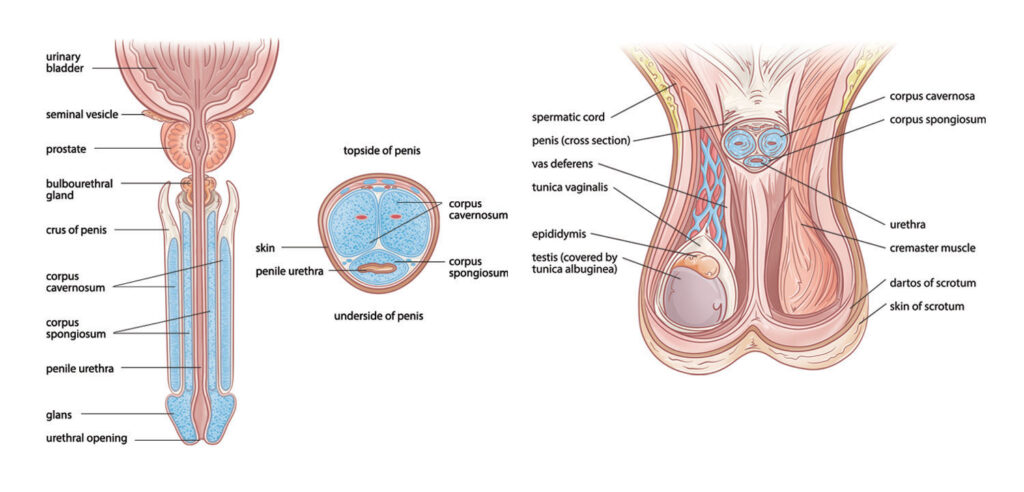The penis is the male sexual organ of vertebrates, responsible for depositing sperm in the woman’s vagina.
It has a dual function, as it is through the penis that sperm and urine are eliminated through the urethral canal. Therefore, it is an organ that belongs to the reproductive and excretory system.
Anatomy and histology of the penis
The penis has a cylindrical shape, with a variable size between 10 to 18 cm and is erect, and can be divided into three parts:

- Base or Root : Portion inserted inside the body.
- Body : Largest portion of the penis, corresponding to the extension of the organ.
- Glans : Dilated portion, known as the head of the penis, being the most sensitive part. It is surrounded by a layer of retractable skin, the foreskin. The foreskin can be removed through surgery called circumcision.
At the apex of the glans is the termination of the urethra, a crack through which urine and sperm are released. In the region of the glans are found sebaceous glands.
The tissue that forms the penis has the ability to fill and empty with blood, allowing the erectile function of the organ. For this, there are three cylindrical structures:
- Cavernous bodies : Two upper cylinders located in the dorsal position, are side by side along the organ. They are surrounded by dense connective tissue.
- Spongy body : A cylinder in the ventral position that surrounds the urethra. Its ends form the glans. It is covered by muscle tissue.

What causes penis erection?
For the erection of the penis to happen, it needs to be filled with blood . This reaction happens in response to some kind of erotic stimulus.
The tissues of the corpora cavernosa are similar to sponges and can fill with blood. When this happens, the erectile and spongy tissue absorbs the blood, like an inflatable system, and the penis increases in size and volume.

Erection of the penis is possible due to the action of nerves. The chemical reactions triggered in the body cause the blood vessels to relax. Thus, the vessels and muscles of the corpora cavernosa can fill with blood.
When ejaculation occurs, the blood flow decreases and the penis becomes flaccid again. All of these actions that occur during erection are coordinated by the autonomic nervous system.
Erection of the penis is an important process, as it is what makes it possible for the organ to penetrate the woman’s vagina during sexual intercourse.
Diseases that affect the penis
Some types of diseases can affect the penis, know the main ones:
Phimosis
The phimosis occurs when you can not pull back the foreskin, the skin that covers the glans. The area is covered by the foreskin causing discomfort and pain at the time of erection and sexual intercourse.
In addition, it prevents proper cleaning of the glans, generating the accumulation of unpleasant substances. It should be noted that the lack of proper hygiene can result in the development of cancer in the penis.
Penile Cancer
Penile cancer is considered rare. Phimosis is an important factor that can trigger the appearance of this type of cancer, associated with poor hygiene and low socioeconomic conditions.
One of the first signs of the disease is changes in the skin of the penis, especially in the glans and foreskin. The appearance of wounds, changes in skin color, lesions, release of secretion, swelling of the glans, the presence of nodules and lumps are common.
Fungal infection
The fungus of the species Candida albicans can cause infections in the penis, especially in the region of the glans and foreskin. The same fungus is responsible for candidiasis in women.
Transmission can occur during sexual intercourse without using condoms. However, it can also happen without sexual contact.
The disease is characterized by causing redness and itching in the glans.

